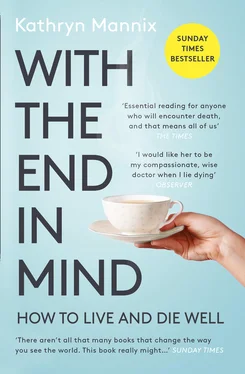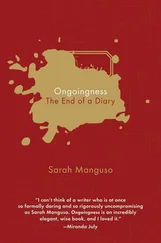Watching people approaching an anticipated death offers families and friends a comfort as they all arrange their priorities and live each day as it arrives. Sometimes, though, death arrives unannounced and unanticipated. In some circumstances this is seen by the survivors as a blessing, although adjustment to sudden death is often harder than a bereavement when there has been a chance to say goodbye.
Perhaps the cruellest circumstance, though, is when a sick person has been getting better and seems to be ‘out of danger’, only to be snatched by death in a completely unforeseen manner. When this happens, a shocking adjustment has to be made by loved ones – and by professionals too.
Alexander and his brothers, Roland and Arthur, were named after heroes. Their mother had hoped that this would inspire them, but Alex shortened his name at school to avoid the taunting his older brothers endured daily. Alex was a quiet soul. He liked art and rock-climbing; he preferred his own company; he loved colour and texture, finding deep pleasure in creating huge canvas artworks that begged to be touched and stroked; he relished the challenge of solo climbs on solitary pinnacles. Eschewing his family’s encouragement to train as an accountant, he took up an apprenticeship as a painter. He neither captured continents nor courted fair damsels: he could feel his mother’s tense anxiety for his future.
But there were heroic aspects to Alex. He was tenacious and determined about his art, and he tolerated physical discomfort without complaint. He endured pain in his back for months, thinking he had pulled a muscle while moving ladders. Only when he was unable to help his boss paint a ceiling because of his pain did he consult his GP. He was then passed between health professionals for six months before someone X-rayed his chest. The X-ray showed a snowstorm of golf-ball-sized cancer masses throughout Alex’s lungs. And then the penny dropped.
‘Alex, before all of this back pain and tiredness started, did you ever have any pain in your scrotum, or feel a lump in one of your testes?’ asked the doctor who had ordered the X-ray. Alex had not anticipated such an odd question, but he could clearly remember that several months previously he had had a ‘hot, sore ball’ for a few weeks. He had thought it was a football injury, and was too embarrassed to seek medical advice. He just waited for the swelling to disappear – which it did, although his testis continued to feel hard and misshapen, and he remained too shy to mention it. Then his back pain had distracted attention from it. All that time, a cancer that had begun in his testis had been slowly spreading up the chain of lymph nodes that lies deep in the abdomen and close to the spine, causing the lymph nodes to swell and hurt, and eventually allowing the cancer cells to escape into his bloodstream and invade his lungs.
Alex arrived as a new boy to the Lonely Ballroom, the six-bedded bay where our crew of young men with the same cancer, testicular teratoma, assembled for their regular five-day infusions of chemotherapy. He was anxious, of course. Like all the visitors to the Lonely Ballroom, Alex had the cancerous testis removed and a range of scans and blood tests to detect how far his cancer had spread. It had found its way into not only his lungs, but also his liver and kidneys, and tumours were scattered around the abdominal cavity like pearls from a broken string. Getting his treatment started was urgent. And now here’s the good news: testicular teratoma can be completely cured, and even when it is widely spread, the cure rates are very high. In our hospital in the 1980s, that treatment took place in the room dubbed the Lonely Ballroom by its brotherhood of occupants.
Waiting for his drip to be set up on his first day, Alex paced restlessly around the ward and up and down the high, glass-walled staircase, from which there is a great view of the locality: the huge, rolling green park near the city centre, the roofs and chimneypots on the terraces of local houses, and the Victorian cemetery at the back of the hospital. The cancer centre was built with its windows facing away from the cemetery ( Don’t mention the D-word ), but all our patients could see it as they parked their cars or disembarked from their ambulances and came up the staircase to the wards.
Teratoma is a cancer of young men. When Alex was shown to his bay, he found five companions already comparing notes on how their last three weeks had gone, debating whether the local football team would ever get off the bottom of the league table, and whether bald can ever be sexy – of specific importance to young men whose chemotherapy had rendered their heads as shiny as polished eggs. They all had drips in one arm and, dressed in shorts and T-shirts, were lounging on their beds or walking around with their drip stands, sharing magazines and chewing gum. They were waiting for their first dose of anti-sickness medication, after which the saline bags on their drip lines would be replaced by bags of chemotherapy. They welcomed Alex like a brother.
‘Which side, mate?’
‘Spread far?’
‘Tough luck, mate, but they’ll see you right in here.’
‘You gonna shave your head or just wait for your hair to drop out?’
I was the most junior doctor in the cancer centre, and I was attached to this thirty-two-bedded ward. Drawing the curtains around Alex’s bed for privacy, I explained the way the chemotherapy would be given. The other five young men in the room gathered in the far corner and continued to discuss last night’s TV and the football World Cup in Mexico, in voices loud enough to demonstrate that they were not eavesdropping: each of them had, in his turn, once been here for the first time, scared and embarrassed and embarrassed to be scared; each had learned the dark humour of the cancer ward and of the Lonely Ballroom. It wasn’t just the remaining testis that was lonely.
All the Lonely Ballroomers were participating in clinical trials. Data were (and still are) gathered from centres all over Europe, and it is this constant, trans-European collaborative effort to find the highest possible cure rate that has made it possible to expect cure in more than 95 per cent of teratoma patients; even people with cancer as advanced as Alex’s have a cure rate of over 80 per cent. Their chemotherapy is highly toxic, not only to their cancer cells, but also to their bone marrow, kidneys and other organs.
During this arduous treatment, the hardest toxicity to bear is nausea. These boys are really, really sick: they vomit and retch and feel horribly nauseated for the full five days. Far better drugs are now available to manage treatment-induced sickness, but back then we had a cunning plan to reduce their experience of nausea: for the full five days they were given a mind-bending combination of drugs that included high doses of steroids, a sedative, and a drug related to cannabis. This made them sleepy, happy and very high. Random laughter and ribald jokes became the norm once the drugs began to disinhibit them. The Lonely Ballroom may have been a cancer ward, but it was always a cheerful one, and as the drugs wore off on day five, the guys could remember remarkably little about the experience apart from their mellow fellowship.
I explained all this to Alex, who had been told it all in clinic, but as is often the case with shocking news, he had retained only a little: cancer , everywhere , chemotherapy , blood tests , sperm count , bald , sick , off work . Helpful details like curable , optimistic , getting back to work , had simply gone over his head. He was terrified, and ashamed of being terrified; like all mountain climbers, he could face the fear of a fall and sudden death, but the idea of watching as death approached, helpless as the sacrificial virgin tied to the stake to await the dragon, was paralysing. He should be a hero like his namesake, not a helpless victim. He felt his fear and labelled himself a coward. His shame outweighed even his fear.
Читать дальше












